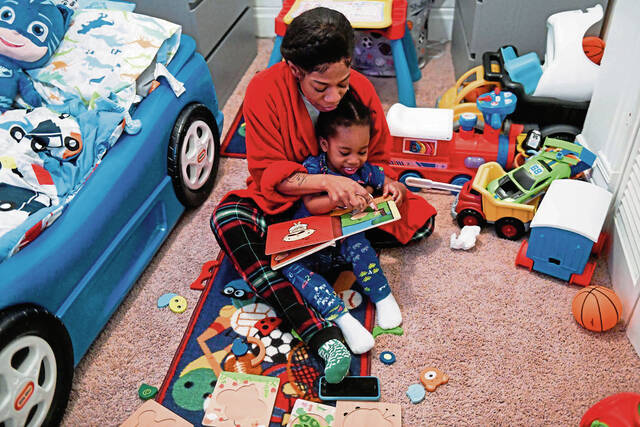Editorial: The real cost of having — or not having — child care
Think about your monthly household bills.
It’s something a lot of people are doing as prices go up, especially in some of the areas that take the big bites.
Imagine the largest chunks, and you might go right to rent or a mortgage payment. Maybe a car loan. Health insurance is a big one. Those bundled internet-phone-cable bills aren’t cheap, and let’s not forget about fuel oil and the gas pump.
But for families with small children, one of the biggest can be child care.
While some people worry about that distant day when they might encounter the crippling burden of college tuition, others are paying about the same every week or month without being able to put it on a loan spread out over time.
According to the Economic Policy Institute, the average cost of having child care for a baby in Pennsylvania is $11,842 a year. That’s more than a third of the median income of $31,099.
Break it down monthly, and child care is $987 a month. That’s just under the average rent or mortgage payments. It’s about the price of two car loan payments. It outstrips most combined utilities.
Those first years before a child starts school — not to mention before- and after-school care or shift care for kids not old enough to be left alone — can make a parent wish for college. At least that can come with scholarships.
So a Spotlight PA story that shows Pennsylvania has hit an all-time low of kids enrolled in a program that helps lower-income families with child care is eye-opening.
The numbers for the program fell about 25,000 from pre-pandemic rates. The Child Care Works wait list has evaporated. It seems unlikely that so many kids aged out of child care needs while not being replaced by new kids — although the U.S. Census Bureau does note a dip in the birth rate since covid-19 hit.
Instead, as businesses continue to clamor for workers, it seems logical to think more families have chosen for a parent to stay home rather than return to the workforce. Maybe it’s because the large number of retirements in the past two years freed up a lot of grandparents to step in to help.
That could be good for families, although not necessarily for the economy. It’s definitely not good for the 44,000 or so child care workers in Pennsylvania whose livelihoods depend on people going back to work. It’s also a potential long-term impact on the careers of those who stayed home — many of them mothers, according to the U.S. Census.
The most important thing about child care remains accessibility — by being affordable and because it remains a vital service in our communities.
Child care allows women to be or remain employed. It lets single parents of any gender do the work that supports their families. It provides the means for workers whose jobs can’t be done from home to continue to do those jobs that keep our world spinning.
The cost of not having that child care is more expensive than our economy can bear.
Remove the ads from your TribLIVE reading experience but still support the journalists who create the content with TribLIVE Ad-Free.

